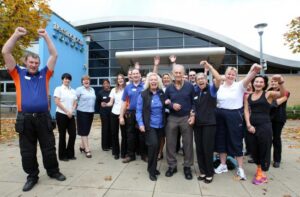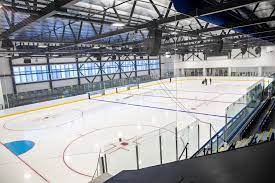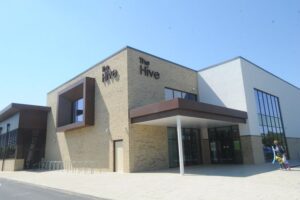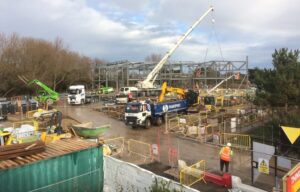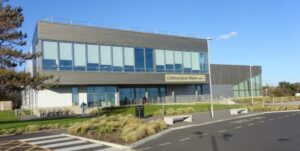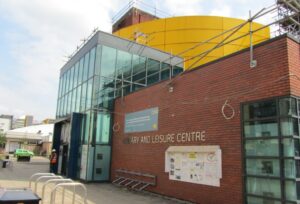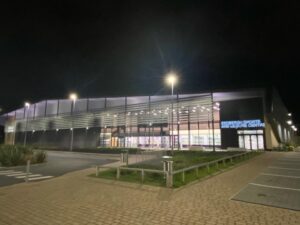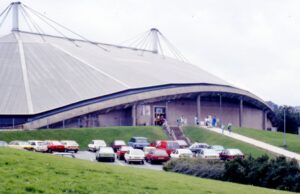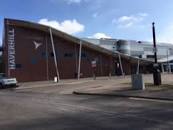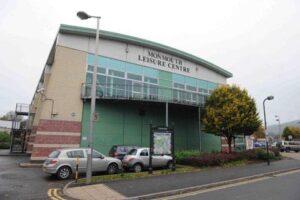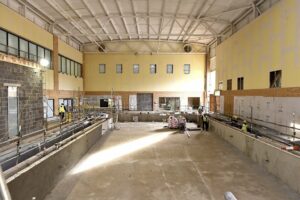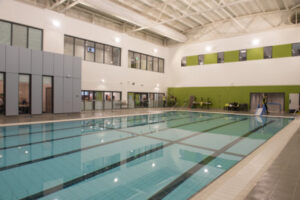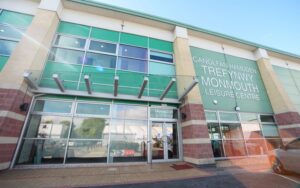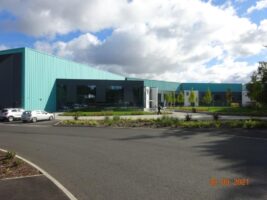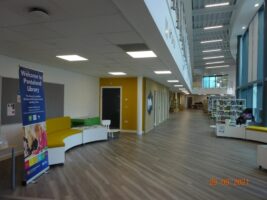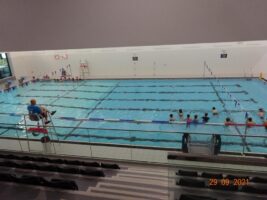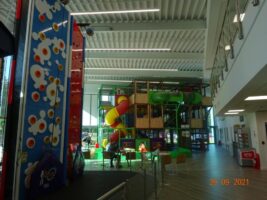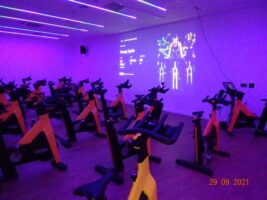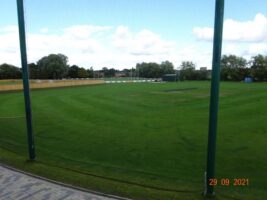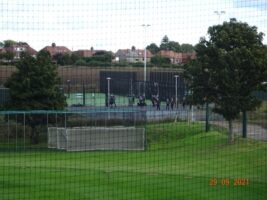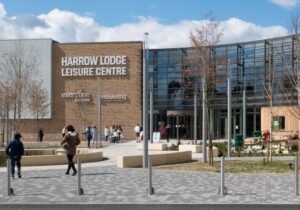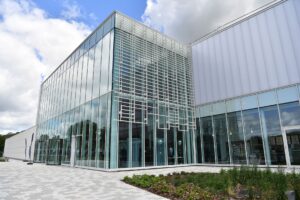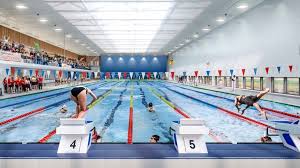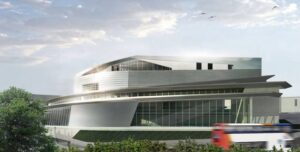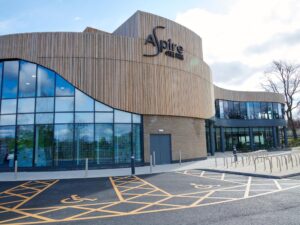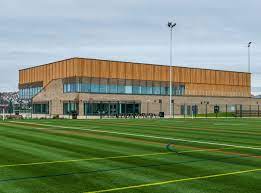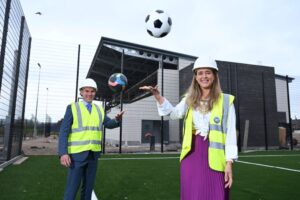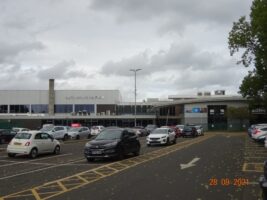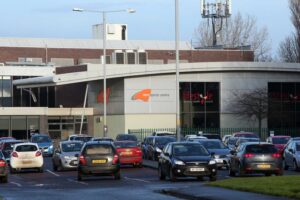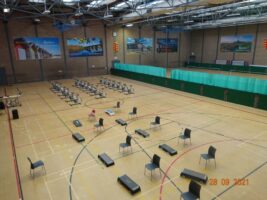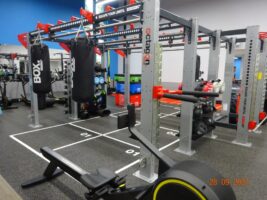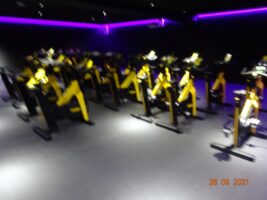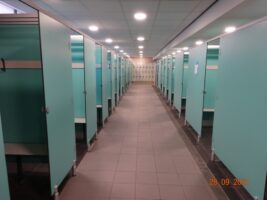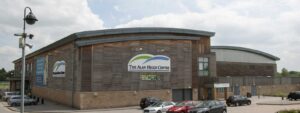
2020 Alan Higgs Centre
The Alan Higgs Centre in Coventry had originally opened in 2004 to provide much needed sports and leisure facilities in the south-east of the city. It is situated in 80-acre grounds, near to the River Sowe. Built at a cost of about £8 million to the owner, the Alan Higgs Centre Trust. The funds were provided by the Alan Edward Higgs Charity. The new centre at that time specialized in football and other outdoor sports. Since then, it has been used by many and is an extremely popular sports venue in the city. By 2020 at over 15 years old, the centre received the refresh it deserved. The centre had some serious investment from Coventry City Council and Sport England. £13.5 million was spent updating the Centre.
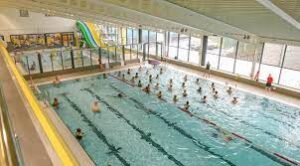
2020 Alan Higgs Centre
In February 2020 a new Olympic-sized swimming opened, ‘replacing’ the international pool at the defunct Coventry Sports & Leisure Centre. Special features of the pool include a moving floor that can be raised to deck level or lowered to two metres. The pool can be divided into smaller sections using a boom, making it suitable for all events including swimming lessons and galas while also being suitable for swimmers of all ages and abilities. It has a pool pod to hoist users with disabilities and is a fully accredited ‘Changing Places’ facility. The new pool facilities include a hot tub, a sauna, and seating for 500 people. As well as the pool, the Centre now has a sports hall and health and fitness suite, function rooms and café, making it a major marque City leisure centre.
The new Britannia Leisure Centre in Hoxton, in the London Borough of Hackney, opened in June 2020. It is described as part of the biggest public sector investment in the area in a generation and one of London’s best leisure centres. Like a number of major leisure developments, the centre opened alongside a new school (City of London Academy Shoreditch Park) and residential properties as the first phase of a wider £384M regeneration project. The plans included demolishing and replacing the old Britannia centre. Inevitably such a grandiose scheme had local antagonists and protagonists.
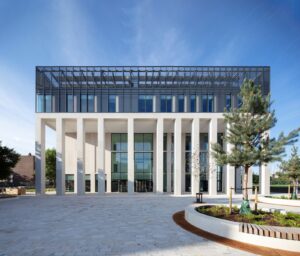
2020 Britannia Leisure Centre
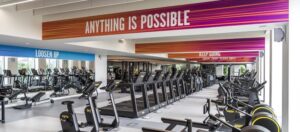
2020 Britannia Leisure Centre
The Centre is on 4 floors with – a 6 lane 25m pool and 20m x 10m training pool, both with moveable floors; sauna and steamroom; a water flume, paddling pool and ‘leisure water’ with splash pad for children and families; a 6-court sports hall; 4 squash courts; a fitness suite, cycle zone and exercise studios; a series of facilities for those with disabilities, intriguingly 2 rooftop 5-a-side football pitches and 2 tennis courts; and a cafe, crèche and soft play area. Summer opening of the Centre saw under 16s given free flume rides for a period. The new centre was developed directly by Hackney Council through its in-house, not-for-profit building programme.
Broughton Astley Leisure Centre opened in February 2020, providing a ‘dry’ centre with a 4-court sports hall, 63-station gym, 2 group exercise studios and an outdoor 3G pitch. The development, costing £3.6M, is a partnership between Parkwood Leisure Ltd and Broughton Astley Parish Council. Broughton Astley is a large village in the Harborough district of Leicestershire. Funding for the centre is largely from a Section 106 agreement and a Football Foundation grant. There is no District Council funding in the Project. Both the general public and local schools use the Centre. In 2020 a £38M Llys Cadwyn town centre redevelopment produced a new leisure facility for Pontypridd. It replaced a long defunct shopping centre. One of the three new principal buildings is a library, leisure & fitness centre and council customer service point. Llys Cadwyn Leisure for Life has a sophisticated 80-station fitness gym, spin and class studios. it complements sports halls and swimming pools at other locations.
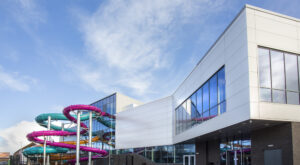
2020 Andersonstown Leisure Centre
Three developments in Northern Ireland in 2020 were firstly, Belfast’s Brook Leisure Centre, officially opened in January 2020 and based on the Brook Activity Centre, with a 60-station fitness gym, 25m 4-lane, studio and outdoor pitches. Secondly, Mid Ulster Council’s Dungannon Leisure Centre opened with a 60-station gym, a sports hall and multi-purpose room, and a 4-lane pool that can be turned into a sensory pool, the first in Northern Ireland. Dungannon’s was an extensive £1.8M refurbishment with new gym equipment and all other facilities upgraded. Thirdly, the new £25M Andersonstown Leisure Centre opened in 2020 as part of Belfast’s transformation plans. The original Andersonstown Sports Centre had been opened in 1979. The new centre has family fun leisure water; 25m 6-lane pool, learner pool and confidence water for young children; 140-station gym, exercise and spin studios, multi-purpose room, cafe and outdoor 5-a-side pitches.
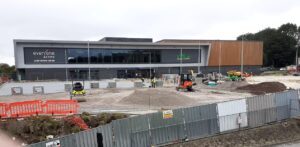
2020 Alton Sports Centre
The £20M Alton Sports Centre replaced an early centre (1972). Besides a 6-lane competition pool and learner pool with the almost de rigueur learner pool with moveable floor, there is also a 130-station gym, a spa, 6-court sports hall, cycling studio and two multi use studios, two glass-back squash courts, a Clip ‘n Climb wall, a 100-seater cafe, a crèche and two outdoor 3G 5-a-side pitches. Alton is a very good example of the full menu of modern facilities being included in full or part in 21st century centres. The Bulmershe Sports Centre in Berkshire in 1971 was an early example of how designing for a school site burgeoned into community provision. Woodley Town Council had been running the centre until Wokingham Borough Council took over and refurbished it at a cost of £400,000 in 2014, but it was demolished in 2018 after asbestos was discovered.
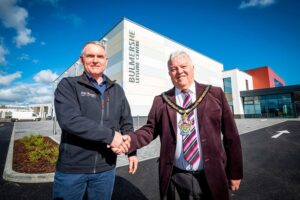
2020 Bulmershe Leisure Centre
The new Bulmershe Leisure Centre opened in 2020 with a 6-lane pool 25m pool, teaching pool, 75-station health club, two studios, a sports hall and cafe.
Another Berkshire centre opened in 2020 – Braywick Leisure Centre in Maidenhead. This has a 10-lane 25m pool with slide, a training pool and children’s splash water. The gym has 200 stations and there is a separate health suite and 3 studios, including for dance and cycling and four ‘flexible space’ squash courts. Outdoor facilities include a floodlit 3G pitch. The design is seen as futuristic with an indoor street and winter garden running through the spine of the building. It is a massive £33M investment by the Royal Borough of Windsor and Maidenhead. Topping the cost of Maidenhead is another major civic building opened in Craigavon in 2020. Costing Armagh City, Banbridge and Craigavon Borough Council £37M, the scale of Craigavon’s new South Lake Leisure Centre probably sets it apart from others in Northern Ireland and many in the rest of the U.K. Building started in 2018 and created 500 jobs on site during construction. It is sited at the existing Watersports Centre adjacent to the Civic & Conference Centre overlooking the lake. It has three floors accommodating an impressive 8-lane 50m international standard pool with moveable floor and 300 spectator seats, a teaching pool, a fun pool and spectator gallery. Its Cafe incredABLE@SouthLake occupies a prominent position on the ground floor. It’s fitness gym, claimed to be the largest in NI or the Republic, covers 1000 sq.m. and has the latest hi-tec equipment. There is also a range of studios including for spin cycling and dance and a sensory room. The sports hall is 8 badminton court size alongside 2 squash courts and a soft play space.
The new Ingleby Barwick Leisure Centre in Stockton-on-Tees, a town long associated with sports centres, opened in August 2020 at a cost of £10M. Ingleby Barwick is a small town in Stockton Borough. The Centre has the now conventional package of pools, fitness suite and exercise studios, plus a community library and Council customer service point. Before 2005 Ingleby had no parks and no amenities and efforts to get a leisure centre with pool started in 2009. Addington Leisure and Community Centre is Croydon’s latest centre and is linked to housing development. Built at a cost of £25M (it had risen by £8M from the outset of the scheme) it has a 4-court sports hall, 25m 6-lane pool and a learner pool, a fitness gym, studio a large community centre with two halls, and a crèche and cafe. It is one of the new centres to be cashless. From 1974 Plumstead Sports Centre was a converted disused transport depot next door to swimming baths. This was a far cry from the new, Royal Borough of Greenwich’s Plumstead Leisure Centre costing £11.8M and opened in 2020. The new centre is a multi-functional cultural and sports centre, combining a refurbished Grade II library building with a new leisure centre housing hi-tech gym and fitness and dance studios, a badminton court, community rooms and a cafe. It is another cashless operation.
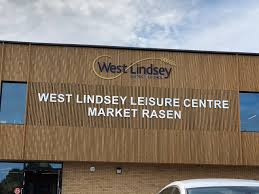
2020 Market Rasen Leisure Centre
Market Rasen with a population of 3,200 in West Lindsey District Council welcomed a new centre in mid-2020. Market Rasen Leisure Centre was built at a cost of £6.3M providing the local community with a 40-station gym, fitness and dance studios, 4-court sports hall and event space plus a 3G football pitch. A pool was not considered financially viable in all the circumstances. Berwick Leisure Centre is a major £26M development by Northumberland County Council. A 25m 5-lane pool, teaching pool, leisure pool, spa and large fitness gym, are due to open in the summer of 2021 and a second phase with sports hall, indoor bowls hall, a sensory room and an outdoor 3G full size pitch in 2022.
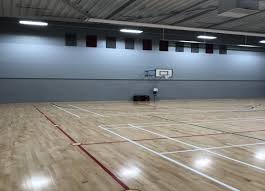
2020 Market Rasen
Ponteland had an unusual and very early sports hall development as we recorded in 1967 (Chapter 2). A new sports and leisure complex now forms part of Northumberland County Council’s £46M education and leisure development, which has seen the existing leisure centre close and Ponteland Leisure Centre and two school facilities – secondary and primary/nursery – all open in 2021. The Centre has a 4-court sports hall with cricket nets, Clip ‘n Climb facility, a Tranquility Spa, a soft play area and the Hive Sports Bar. Outside there are sports fields, 2 multi-sports and a full-size 3G pitch. The location of the Centre virtually makes it a dual use provision for community and school.
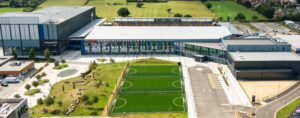
2020 York LNER Stadium
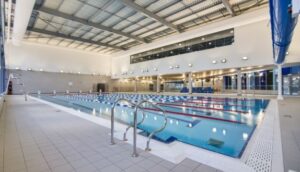
2020 York Stadium Pool
Several, of the larger local authorities have been very ambitious and innovative with partnerships to develop more original leisure developments. We have recorded some other similar original developments, including Ravenscraig (2010), XC Hemel Hempstead (2011), Bangor Aurora (2013), and Derby Arena (2015). York City Council fitted that mould in developing and opening in 2021 its £41M York LNER Community Stadium. The Stadium itself opened in May 2021 with a pandemic limited 1,000 spectators watching York City Knights play Oldham in the Rugby League Football Championship. It also follows the trend of combining several community services together. As with such major projects there was some uncertainty and objections. One objector said there was more chance of him playing centre forward for Man City than the stadium happening. However, a York City FC supporter for 70 years, said he thought he would never see the day and thought it was superb. It is located in the Huntington area of the city. It is also an unusual complex with a combination of sporting, health and educational facilities. Besides the 8,500-seater stadium for York City FC and York City Knights RLFC, there are new swimming facilities, a gym, dance studio and sports hall with spectator seating. On the site is a new 13 screen IMAX cinema, Hollywood Bowl, retail and restaurant outlets, and a community hub including library, NHS outpatient clinic offering several specialist services, and community offices for the two stadium clubs.
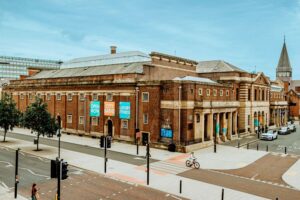
2020 Newcastle Baths
Opening in December 2020 Whitehill & Bordon Leisure Centre (£10M) marked the end of East Hampshire Council’s £30M revamp of sport and leisure provision (including Alton). The Council struck a deal with its leisure operator for Whitehill for the whole Council investment to be paid back over the lifetime of the 20-year operational contract. The Centre comprises a 6-lane 25m pool, teaching pool, an 80-station fitness gym, a large exercise studio and cycle spin room. The official opening of the ‘new’ Greig Leisure Centre in Alcester by Stratford-on-Avon District Council arose from the Council acquiring the 1958 centre from the Greig Trustees and carrying out a refurbishment. It has a 4-court sports hall, ‘Lifestyles’ gym & studio, two squash courts, and dance studio, and multi-purpose rooms. Whilst a vast number of old Baths have ‘bitten the dust’ over the years, we have recorded some being saved and re-purposed. The Grade II Newcastle City Baths (pool and Turkish baths built in 1928 and closed in 2013) were re-opened in January 2020 after a £7.5M project involving an architectural plan and led by Fusion Lifestyle who had taken a lease on the building. Besides the pool there is a gym, sauna and fitness studio. Urmston Leisure Centre in Trafford received investment of £7M and was renamed Move Urmston. Whilst retaining the bulk of the building the changes were significant. A new glass frontage enhanced the building and a new double height lounge cafe added at the front with 100 seats. Large coloured pods either side provide for new activity studios and a clip ‘n climb wall installed. It also has the 25m L-shaped pool and 5-court sports hall.
St. Helens Council’s Selwyn Jones Leisure Centre in Newton-le-Willows re-opened after a £4.2M modernisation of what was a tired 1990s building. Re-purposing the sports hall, as Billingham Forum did, saw half of the sports hall converted with a mezzanine floor to take a 90-station gym and spin studio, with the other half facilitating a new adventure play area for under-11s and three party rooms. A grant of £335,000 via Sport England improved access to the swimming pool and gym for those with disabilities, plus a new changing village was installed. All other areas were renovated, including the café and reception area. Extensive work on mechanical, electrical and plant services was also undertaken to significantly extend the life of the Centre. Some other leisure centres refurbished in 2020 included: – Kingfisher LC, Sudbury – Babergh DC (£2.4M); Waveney Valley LC, East Suffolk (£3.4M); Waterfront LC, RB of Greenwich (£1.4M); and Chesham LC and Chalfont LC, Buckinghamshire (£4M).
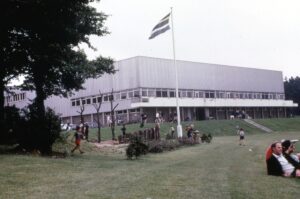
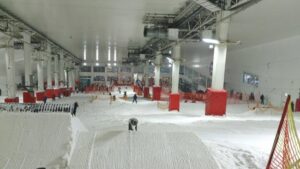
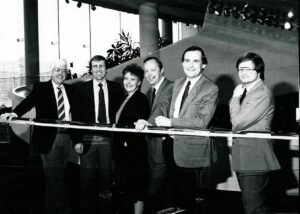


 Borough Council (WBC), for example, in 2017 in setting out the case for a ‘Leisure Strategy’ stated “WBC recognises the significant benefits that the provision of sport and leisure activities and facilities can bring to the physical, social and economic health of our communities”. This sentiment is typical of most local strategies (see Ch. 9) and can be found in slightly different words in most and therein, as ever, lies one of the fundamental justifications for the public provision of centres.
Borough Council (WBC), for example, in 2017 in setting out the case for a ‘Leisure Strategy’ stated “WBC recognises the significant benefits that the provision of sport and leisure activities and facilities can bring to the physical, social and economic health of our communities”. This sentiment is typical of most local strategies (see Ch. 9) and can be found in slightly different words in most and therein, as ever, lies one of the fundamental justifications for the public provision of centres. management trends and progress in technology. The overall profile of sport has risen, particularly through the media and the increasing number of TV channels carrying sport. The 2012 London Olympics, Paralympics and Invictus Games have played a part. The role played by women’s sport, competitively and recreationally, has increased significantly. There has also been a greater focus on sport and recreation opportunities for those with disabilities. Thus the evolving role of fitness, health, sport and leisure in society have been crucial in the decision making for facility provision, especially in the last 10 years. These influences are embodied in the new and refurbished centres illustrated in this Chapter (see 10.4).
management trends and progress in technology. The overall profile of sport has risen, particularly through the media and the increasing number of TV channels carrying sport. The 2012 London Olympics, Paralympics and Invictus Games have played a part. The role played by women’s sport, competitively and recreationally, has increased significantly. There has also been a greater focus on sport and recreation opportunities for those with disabilities. Thus the evolving role of fitness, health, sport and leisure in society have been crucial in the decision making for facility provision, especially in the last 10 years. These influences are embodied in the new and refurbished centres illustrated in this Chapter (see 10.4).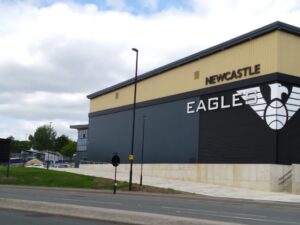
 The Leisure Media Company Limited is the country’s leading commercial publisher of printed and online business magazines for professionals working in the sports, leisure, health, fitness, spa and attractions industries. It gives significant coverage to new leisure centre developments (and has been a valuable source of information on centres for this Chapter). It sits alongside the smaller role played by CIMSPA, CLOA and Community Leisure producing magazines and newsletters for their membership. Leisure Media was founded by Liz Terry MBE. Leisure Media has become highly respected in the industry it serves. It now publishes a wide range of digital, online and printed services. It is the only national commercial publishing company serving the leisure and recreation sector and thus almost unique in its coverage of leisure centres. In 2020-21 it played a leading role in publicising sport and recreation issues, especially around facilities, during the Covid-19 pandemic. See the full story
The Leisure Media Company Limited is the country’s leading commercial publisher of printed and online business magazines for professionals working in the sports, leisure, health, fitness, spa and attractions industries. It gives significant coverage to new leisure centre developments (and has been a valuable source of information on centres for this Chapter). It sits alongside the smaller role played by CIMSPA, CLOA and Community Leisure producing magazines and newsletters for their membership. Leisure Media was founded by Liz Terry MBE. Leisure Media has become highly respected in the industry it serves. It now publishes a wide range of digital, online and printed services. It is the only national commercial publishing company serving the leisure and recreation sector and thus almost unique in its coverage of leisure centres. In 2020-21 it played a leading role in publicising sport and recreation issues, especially around facilities, during the Covid-19 pandemic. See the full story 
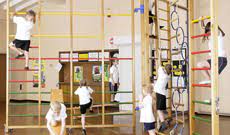

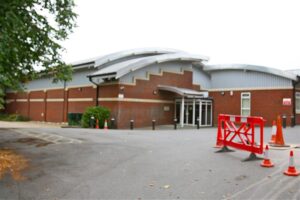
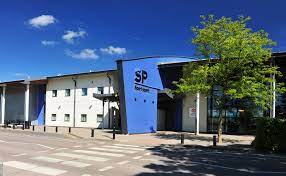
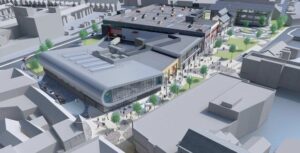
 As many new centres are being linked to regeneration schemes to re-develop parts of cities and towns, this is reminiscent of the development of some new towns that generated sports centres 50 or 60 years ago. Planning gain under the Community Infrastructure Levy, as part of the funding mechanism, has also assisted in the provision of new centres. To reinforce the case for new centres their physical and social well-being benefits have come to the fore again. Saying ‘again’ reflects that from the days of Harlow onwards these centre benefits have been part of the array of justifications for such public capital and revenue investment. The huge concerns raised this century about health and well-being and fitness have had a big impact on the attitude and behaviour of a swathe of the population and on the strategic investment responses by local authorities.
As many new centres are being linked to regeneration schemes to re-develop parts of cities and towns, this is reminiscent of the development of some new towns that generated sports centres 50 or 60 years ago. Planning gain under the Community Infrastructure Levy, as part of the funding mechanism, has also assisted in the provision of new centres. To reinforce the case for new centres their physical and social well-being benefits have come to the fore again. Saying ‘again’ reflects that from the days of Harlow onwards these centre benefits have been part of the array of justifications for such public capital and revenue investment. The huge concerns raised this century about health and well-being and fitness have had a big impact on the attitude and behaviour of a swathe of the population and on the strategic investment responses by local authorities.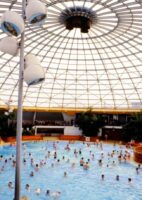
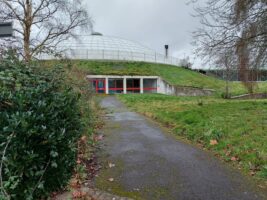
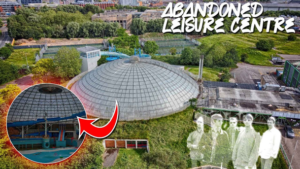
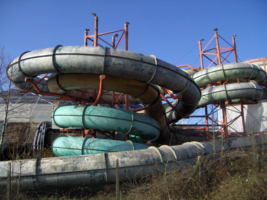
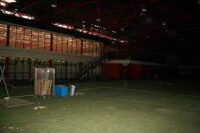
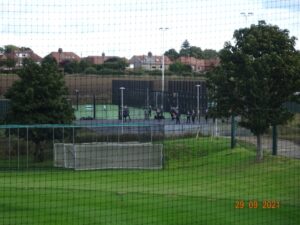
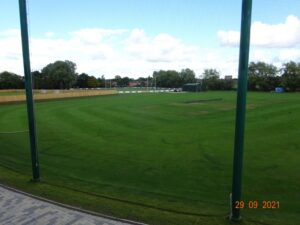
 So, whilst overall, far fewer 21st century refurbishments have been implemented than new centres constructed, the refurbishments have been many and have loosely fallen into several broad categories. Firstly, those that are often presented as ‘new centres’ but are substantially extended and enhanced existing centres. Then there are those where an extension is built for a new fitness gym or to increase the existing gym size in order to enhance the membership ‘money spinner’, or add group exercise or spin studios, or add a swimming pool to a ‘dry’ centre. Other refurbishments can be considered as general appearance modifications and minor enhancements for the customer experience. Nonetheless, some of the latter centres were still replaced a few years after their refurbishment.
So, whilst overall, far fewer 21st century refurbishments have been implemented than new centres constructed, the refurbishments have been many and have loosely fallen into several broad categories. Firstly, those that are often presented as ‘new centres’ but are substantially extended and enhanced existing centres. Then there are those where an extension is built for a new fitness gym or to increase the existing gym size in order to enhance the membership ‘money spinner’, or add group exercise or spin studios, or add a swimming pool to a ‘dry’ centre. Other refurbishments can be considered as general appearance modifications and minor enhancements for the customer experience. Nonetheless, some of the latter centres were still replaced a few years after their refurbishment.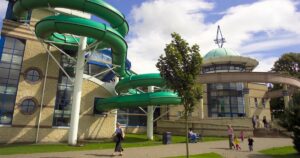
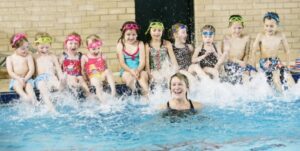
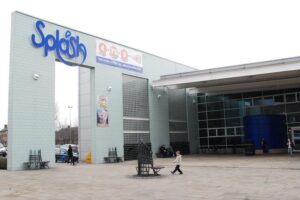
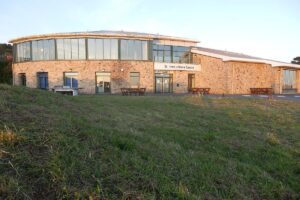
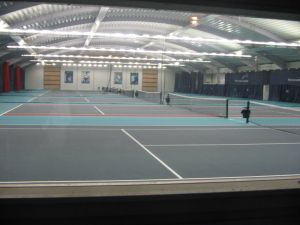
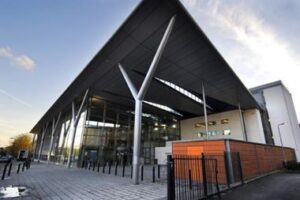
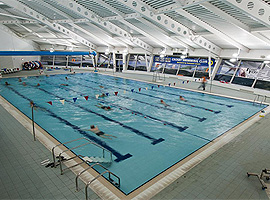
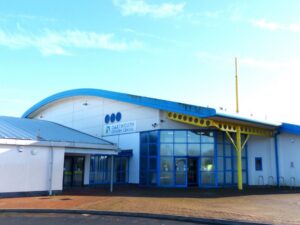
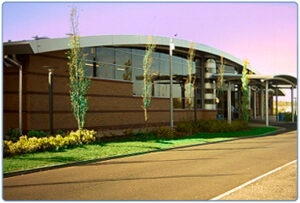
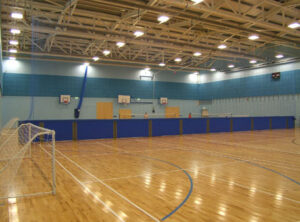
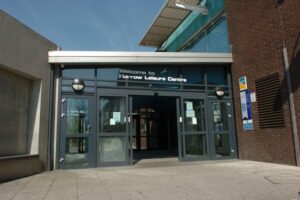
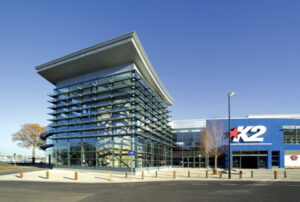
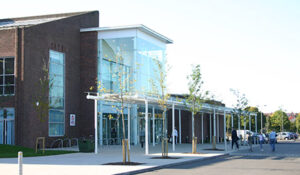
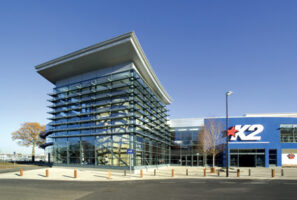
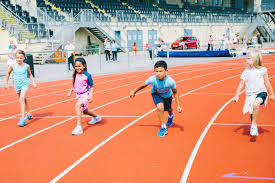
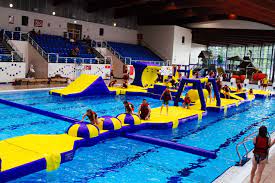
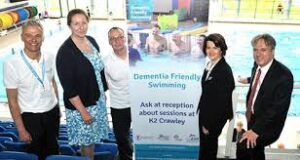
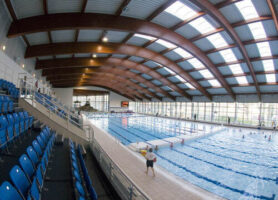
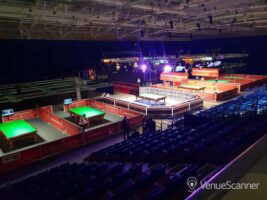
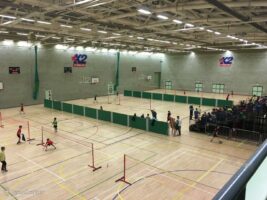
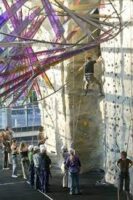
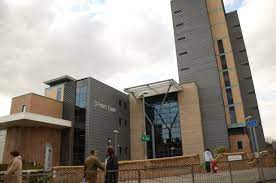
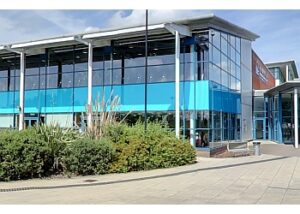
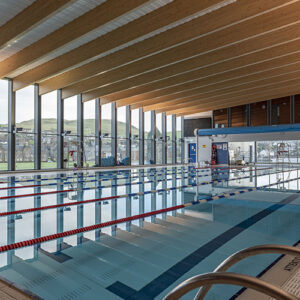
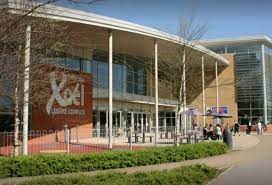
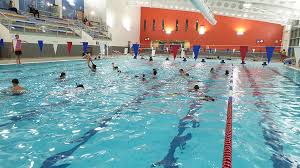
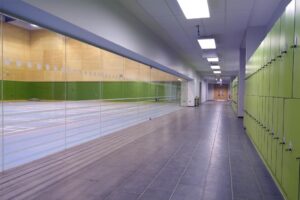
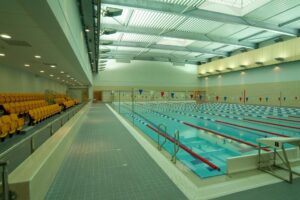
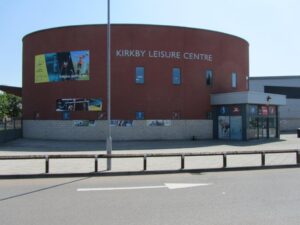
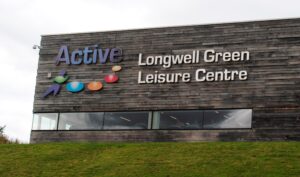
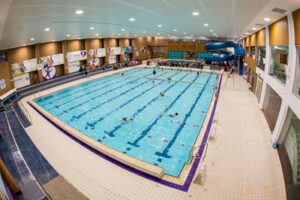
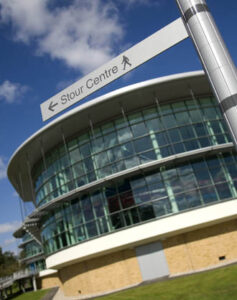
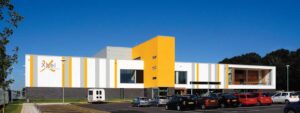
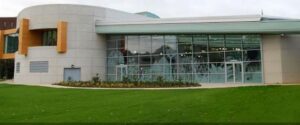
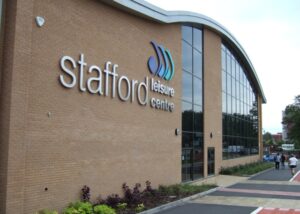
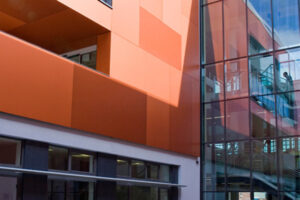
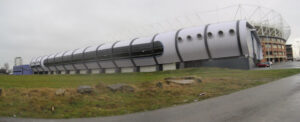
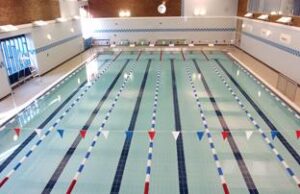
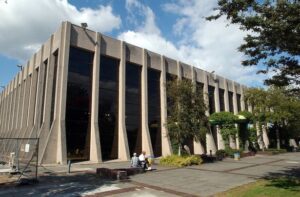
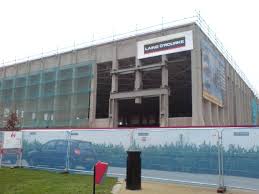
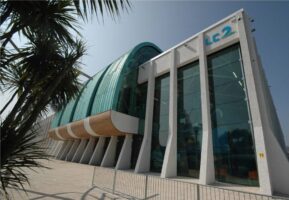
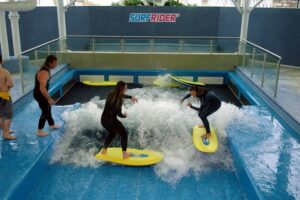
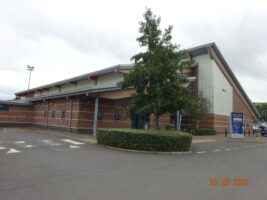
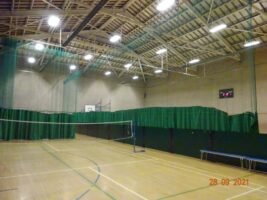
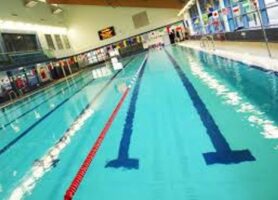
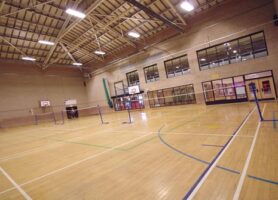
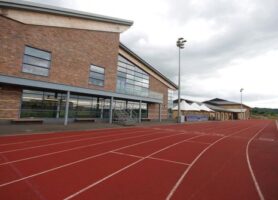
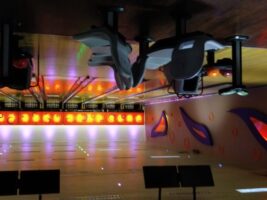
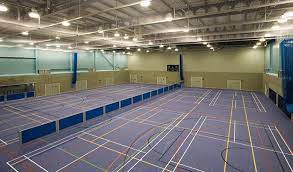
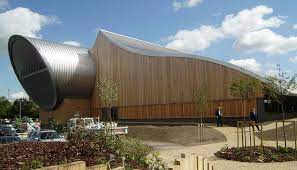
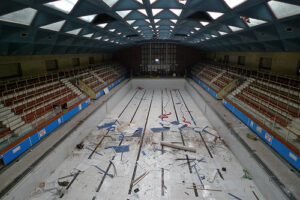
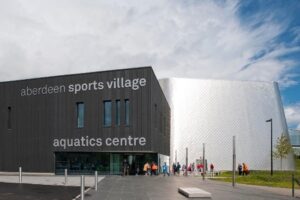
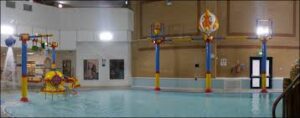
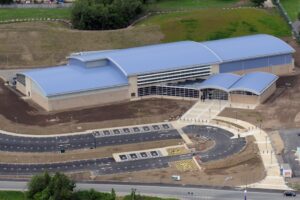
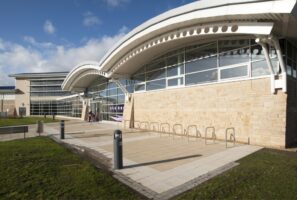
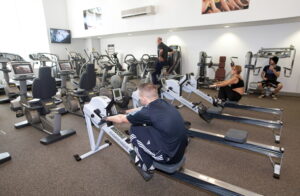
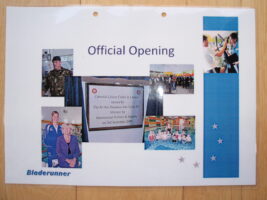
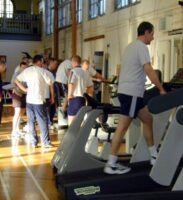
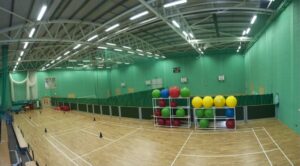
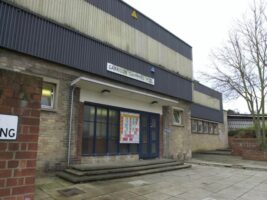
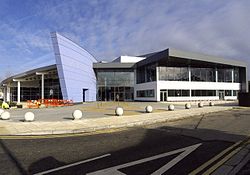
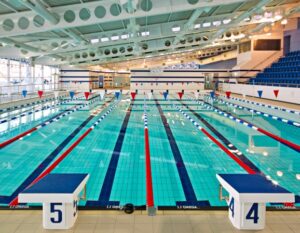
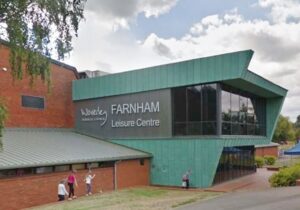
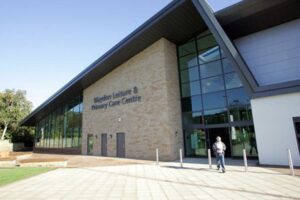
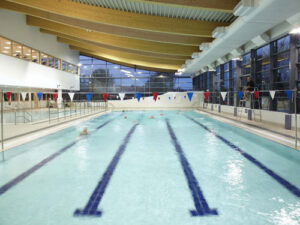
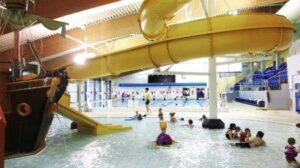
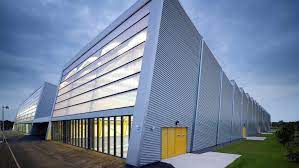
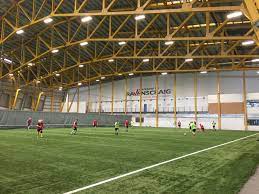

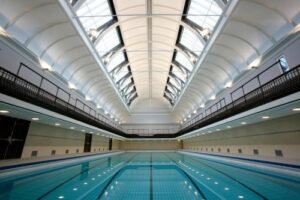
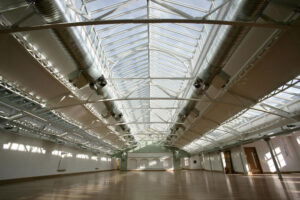
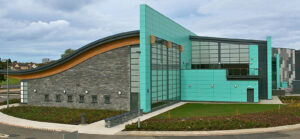
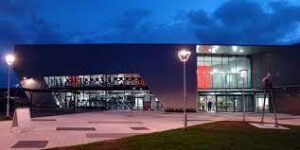
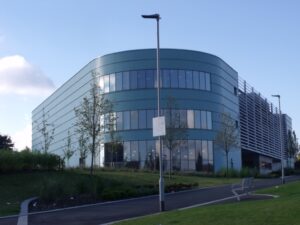
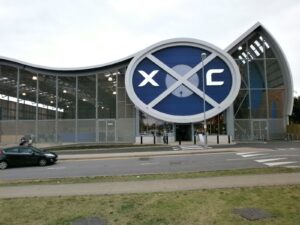
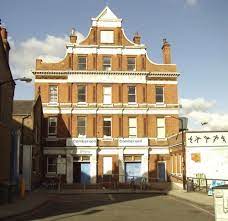
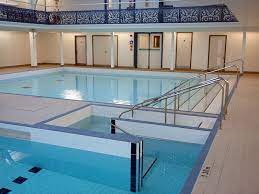
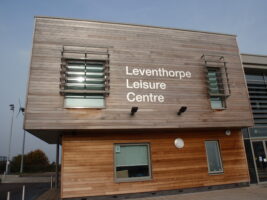
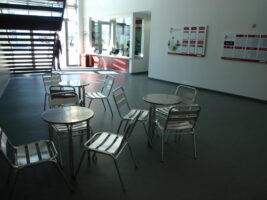
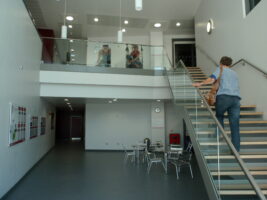
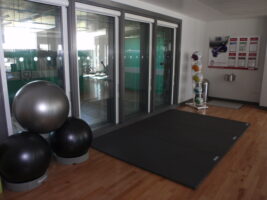
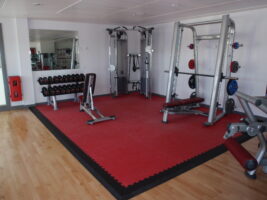
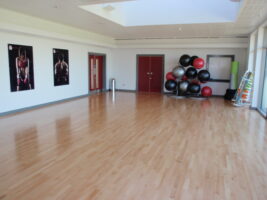
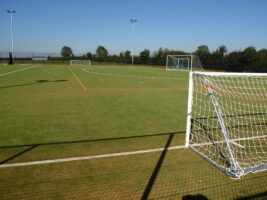
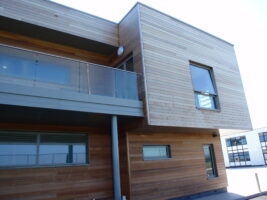
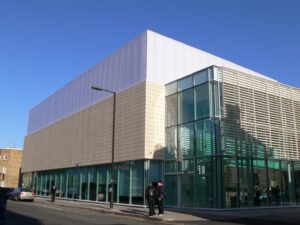
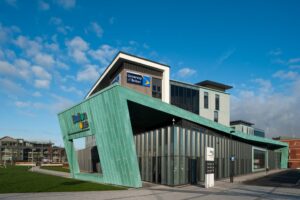


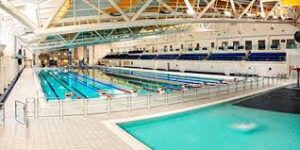
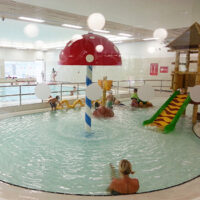
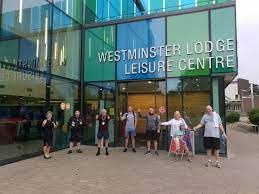
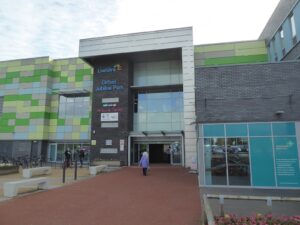
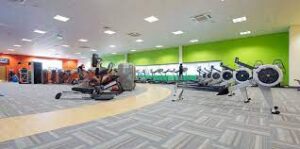
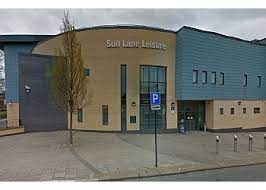
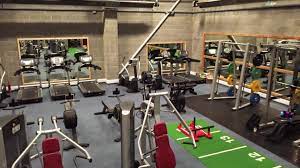
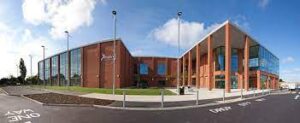
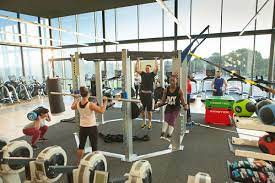
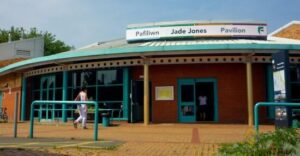
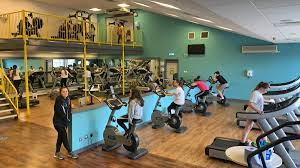
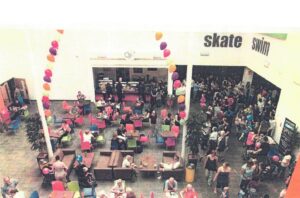
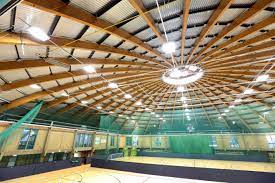
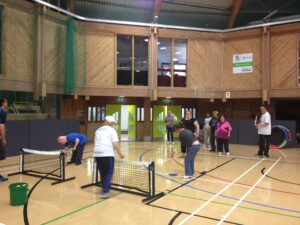
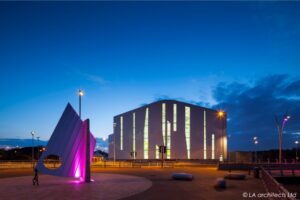
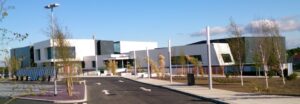
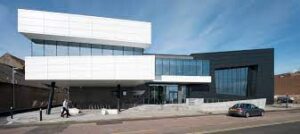
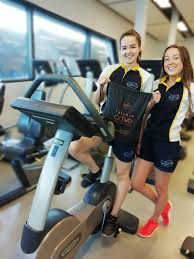
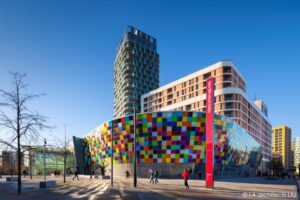
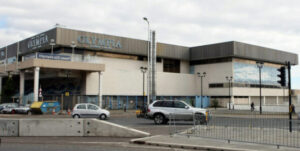
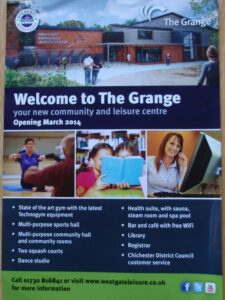
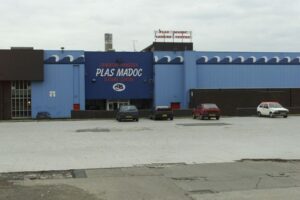
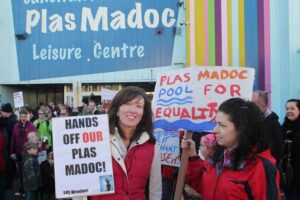
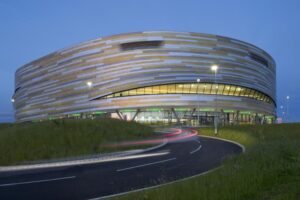
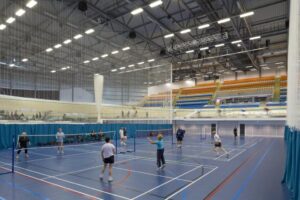
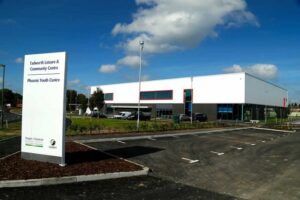
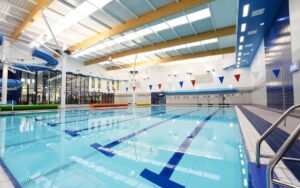
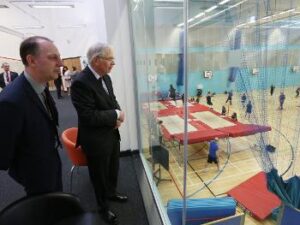
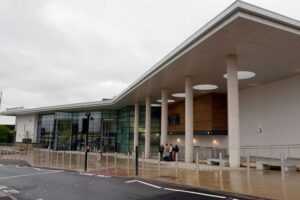
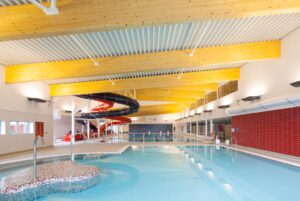
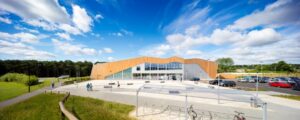
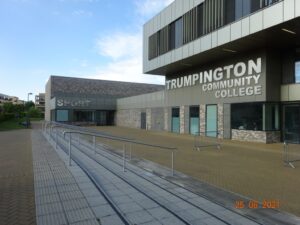
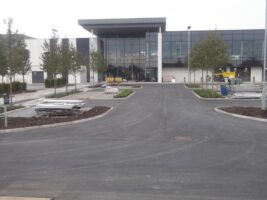
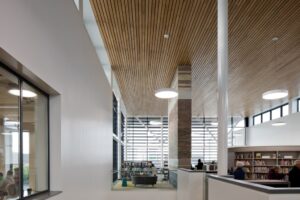
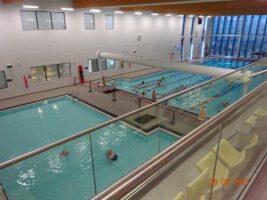
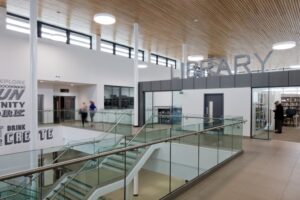
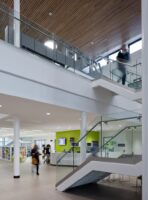
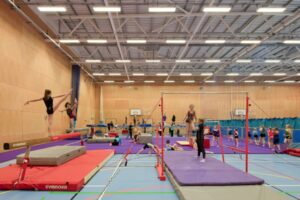
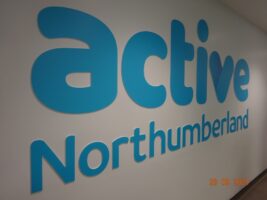
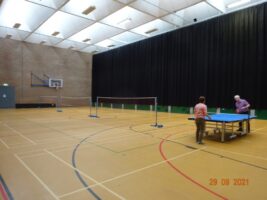
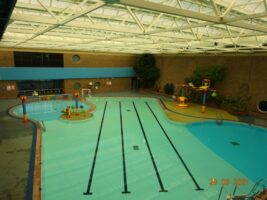
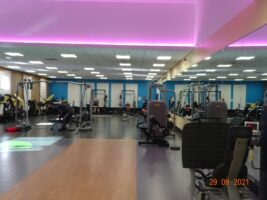
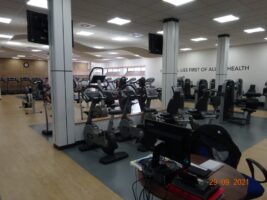
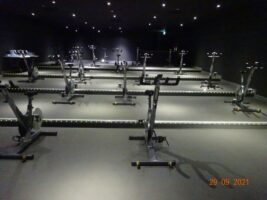
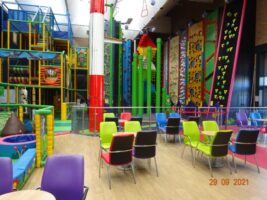
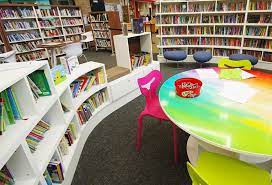
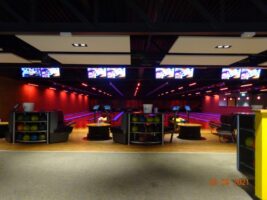
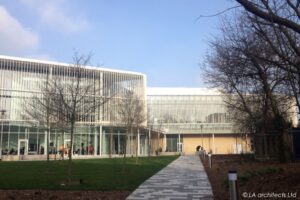
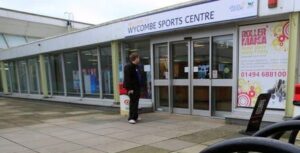
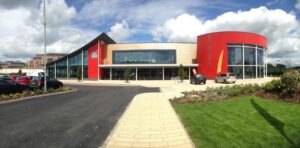
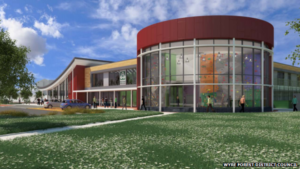
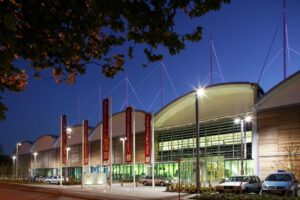
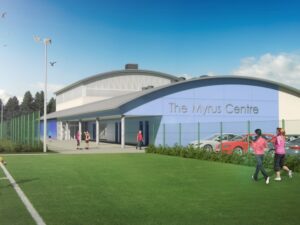

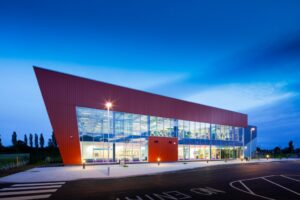
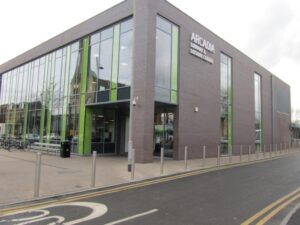
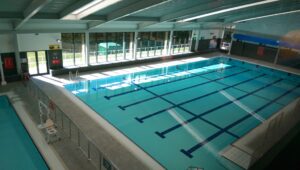

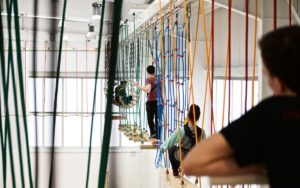
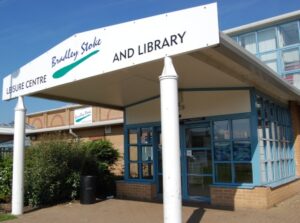
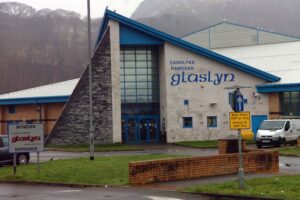
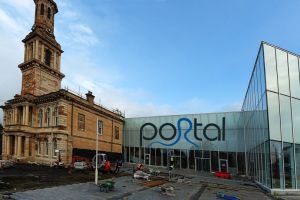
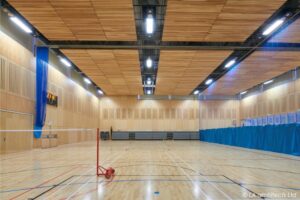
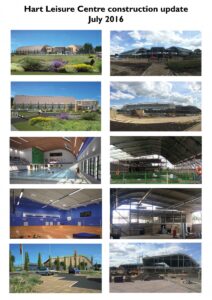 Two very interesting centres opened at either end of the county of Hampshire. In the north-east of the County, Hart District Council opened the £23M Hart Leisure Centre in Fleet with an array of facilities: a climbing wall (space for 5 climbers from ground to first floor); fitness gym (120+ state-of-the-art stations, plus multi-use cross-training space); 3 pools (8-lane 25m swimming pool, a teaching pool/children’s play area – suitable for toddler to junior lessons as well as a shallow play area with mini fountains and geysers, and a multipurpose swimming pool with movable floor; and of course a sports hall – 8-court size; martial arts and dance studios; creche, coffee shop and sun terrace. It also provides a wide range of outdoor facilities:- 2 junior natural turf pitches, 4 floodlit artificial grass pitches and 1 FIFA standard full-size, flood-lit artificial grass pitch; plus a very large car park, and a footpath to and from the country park. It replaced the previous Hart Centre which was also adjacent to Calthorpe Park School.
Two very interesting centres opened at either end of the county of Hampshire. In the north-east of the County, Hart District Council opened the £23M Hart Leisure Centre in Fleet with an array of facilities: a climbing wall (space for 5 climbers from ground to first floor); fitness gym (120+ state-of-the-art stations, plus multi-use cross-training space); 3 pools (8-lane 25m swimming pool, a teaching pool/children’s play area – suitable for toddler to junior lessons as well as a shallow play area with mini fountains and geysers, and a multipurpose swimming pool with movable floor; and of course a sports hall – 8-court size; martial arts and dance studios; creche, coffee shop and sun terrace. It also provides a wide range of outdoor facilities:- 2 junior natural turf pitches, 4 floodlit artificial grass pitches and 1 FIFA standard full-size, flood-lit artificial grass pitch; plus a very large car park, and a footpath to and from the country park. It replaced the previous Hart Centre which was also adjacent to Calthorpe Park School.